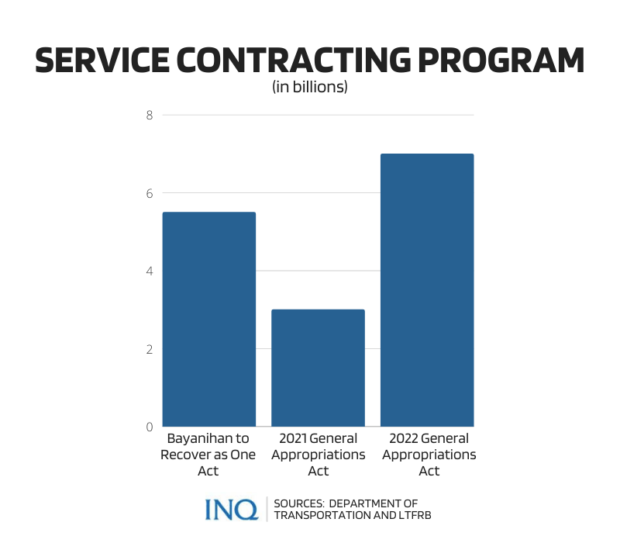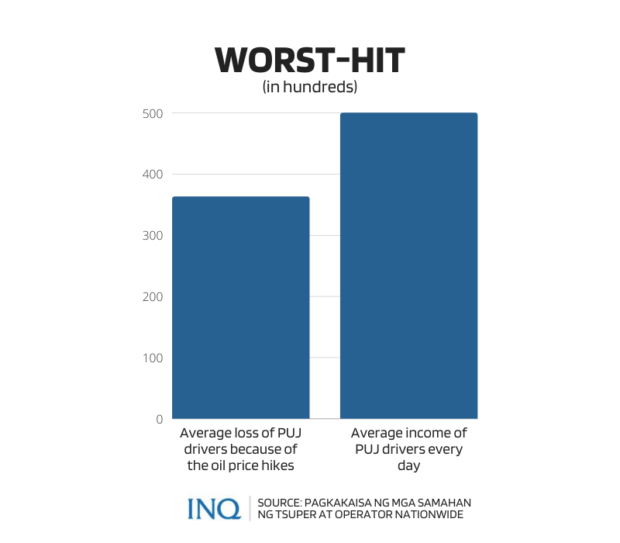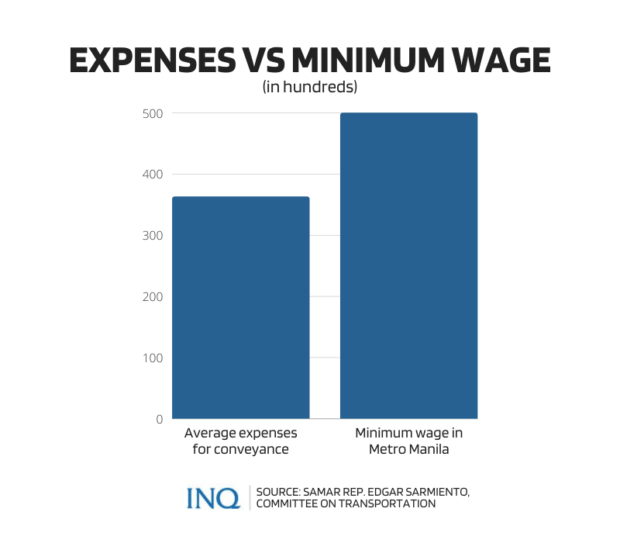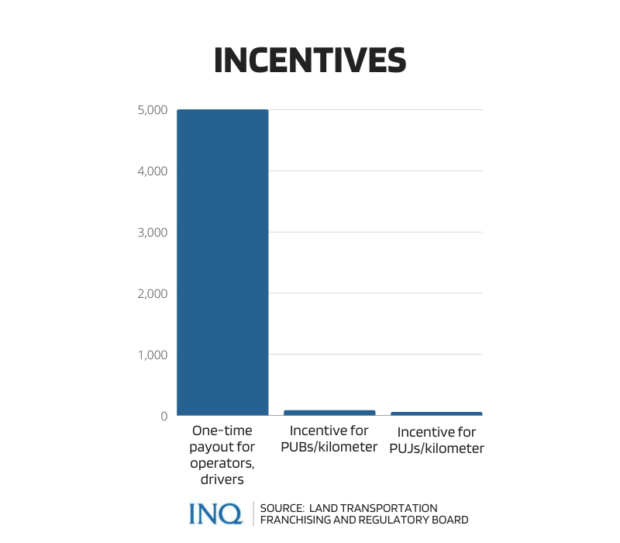‘Libreng Sakay’: Gov’t told good intentions are sometimes bad
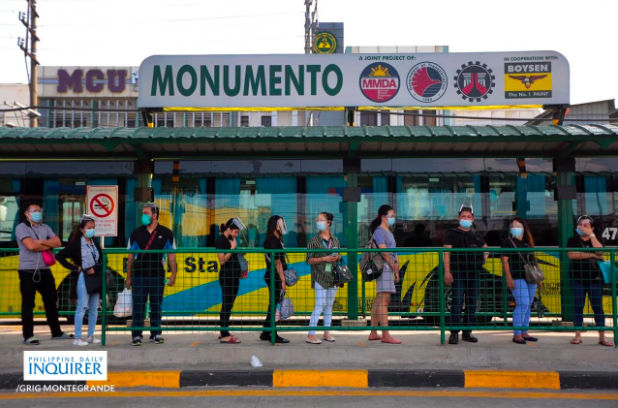
Commuters queue to ride the EDSA Bus Carousel in Monumento, Caloocan City. INQUIRER/GRIG C. MONTEGRANDE
MANILA, Philippines—As the government prepares to implement the third stage of Service Contracting Program (SCP), which would lead to “Libreng Sakay (free rides)”, a transport watchdog group is voicing concerns over its impact on public transport in general.
The group Move As One Coalition (Move As One) said Libreng Sakay, which would be carried out through the SCP, carries disadvantages both to operators or drivers of public utility vehicles (PUVs) and commuters.
Last March 23, the Department of Transportation (DOTr) said the program will help people in their “mobility needs” by making certain that transport services are efficient and reliable.
Maria Kristina Cassion, executive director of the Land Transportation Franchising and Regulatory Board (LTFRB), said that this year, the SCP will cover buses, jeepneys, and UV Express, or vans licensed as public conveyance vehicles.
This, as the program was given P7 billion through the 2022 General Appropriations Act, higher than last year’s P3 billion. Transportation Secretary Arthur Tugade said this will pave the way for the resumption of Libreng Sakay.
Article continues after this advertisementIn 2020 the SCP was first implemented to help operators or drivers who were hit by the COVID-19 crisis, especially because of the 30 to 70 percent passenger limit that was set by the government.
Article continues after this advertisementREAD: LTFRB to suspend service contracting, free ride programs as Bayanihan 2 expires
The implementation of the program came to a standstill last year, July 1, because of the expiration of the Bayanihan to Recover as One Act. It was continued on Sept. 13 through the 2021 General Appropriations Act.
READ: LTFRB seeks P 3-B budget for ‘Libreng Sakay’ program
The LTFRB said the government is set to start the implementation of Libreng Sakay this April, stressing that it is even expecting more operators or drivers to take part.
READ: LTFRB eyes implementing Service Contracting Program anew in April
However, for Move As One, this will do “more harm than good,” saying that the government should reconsider the implementation of the program as Libreng Sakay. It listed these reasons:
• It is only viable to cooperatives and corporations that have the financial capacity to advance transport service operations for a certain period.
It said the SCP, if implemented as Libreng Sakay, will benefit only operators or drivers that are better off than those who depend on day-to-day operations for income.
They are the individuals worst hit by the oil price hikes and still, the COVID-19 crisis, Move As One said. The 12th oil price hike this year took effect on Tuesday (March 29):
1. P8.65/liter of diesel
2. P3.40/liter of gasoline
3. P9.40/liter of kerosene
The Pagkakaisa ng mga Samahan ng Tsuper at Operator Nationwide (Piston) said the oil price hikes hit PUJ drivers, saying they are losing P363 every day. In 2019, it said an operator or driver earns an average of P500 to P600 per day.
• It will result in a drop in public transport supply if accessed unevenly by operators or drivers of the same route.
Move As One said the Libreng Sakay will sow social tension among operators or drivers plying the same route since passengers will obviously choose to ride public utility vehicles (PUVs) that offer Libreng Sakay.
From 2020 to 2021, the LTFRB said there were 44 million passengers who benefitted from Libreng Sakay. This year—April to December— it is expecting a 93 million ridership.
Samar Rep. Edgar Sarmiento, chair of the House Committee on Transportation, earlier told INQUIRER.net that for transportation, Filipinos spend an average of P200 pesos or 37 percent of the P537 minimum wage.
Move As One said this will make fare-based PUV operations less viable while its operators or drivers strive to make both ends meet because of the COVID-19 crisis and the consecutive oil price hikes this year.
It stressed that passengers will bear the consequences of the more lasting effect of a drop in public transport supply after a short-lived Libreng Sakay program.
Robert Siy, one of the convenors of Move As One, wrote that when passengers start riding Libreng Sakay PUVs, the market of operators or drivers that charge fares will diminish.
He stressed that this will erode the financial viability of most of the public transport industry, saying that if some operators decide not to compete with Libreng Sakay, it will result in less, rather than more, public transport.
• It will immediately “deplete” the P7 billion for the SCP with “limited reach and impact”.
The coalition said the benefit of the P7 billion program is limited, stressing that when used to cover the complete operational expenses of selected cooperatives and corporations, it will only last for a short period of time.
“It will only benefit a few cooperatives, corporations and workers. As fast as it’s depleted, transportation supply will again drop, heavily affecting passengers and workers,” it said.
Siy, who is likewise a development economist and a city and regional planner, said while it may seem like a great idea, with Libreng Sakay, the resources for the SCP will be consumed in no time.
For instance, he said the P3 billion last year was only enough for 33,333 PUJs for 30 days, with each PUJ unit paid P3,000 every day. He said this only covered 20 percent of the total PUJs in the Philippines.
Last Feb. 28, Tugade said there were 118,238 operational units of different PUV modes and that on March 15, there will be 8,729 more operational units of different PUV modes that will ply 1,585 routes.
Through the program, the government, through the DOTr and LTFRB, will provide weekly payments to operators or drivers based on “kilometers traveled,” with or without passengers. This is on top of a one-time incentive of P5,000.
In June 2021, the DOTr said the payment for each kilometer was P82.50 for PUBs and P52.50 for PUJs. Considering Siy’s computations, with 57 kilometers every day, the P7 billion is only enough for less than 3 months for PUJs.
Alternative
Move As One said the government should reconsider the implementation of the SCP as Libreng Sakay or a gross service contracting program.
Instead, the DOTr and LTFRB should optimize the resources by giving 50 percent of the P7 billion to a net service contracting program, which will be accessed by small cooperatives, especially by traditional PUJ operators or drivers.
The Department of Budget and Management, which already released the P7 billion to the DOTr, said the SCP will be implemented through net cost contracting and gross cost contracting.
“We believe that SCP is best implemented to partially subsidize public conveyance and still allow transport cooperatives and corporations to collect fares,” it said.
Move As One stressed that this will expand the reach of the program and will sustain public transport operations longer than Libreng Sakay.
RELATED STORIES
2-year COVID pause brings public transport change, but new normal looks old
LTFRB clarifies COA report on using only 1% of Service Contracting Program budget
TSB
